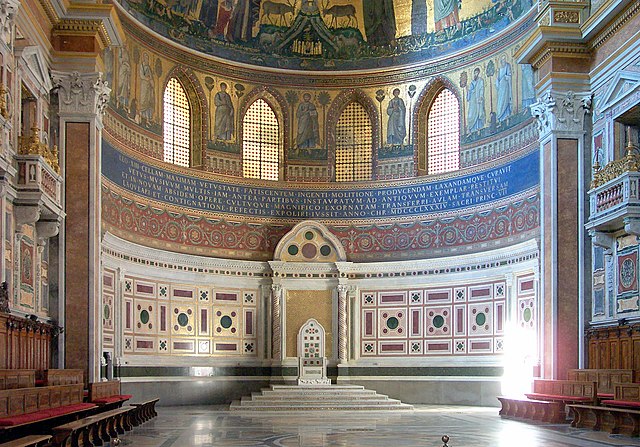The flag of Vatican City was adopted in 1929, the year Pope Pius XI signed the Lateran Treaty with Italy, creating the new independent state of Vatican City governed by the Holy See. The flag is a vertical bicolour of yellow and white, with the white half charged with the coat of arms of Vatican City. It was modeled after the 1808 flag of the Papal States, a yellow-and-white bicolour defaced with the tiara and keys in the centre.
Flag of Vatican City flying at half-staff outside the Oxford Oratory on the day after the death of Pope John Paul II
Incorrect flag with the lining of the tiara colored red, in use at the Apostolic Nunciature to Germany in Berlin
The Holy See, also called the See of Rome, Petrine See or Apostolic See, is the jurisdiction of the pope in his role as the Bishop of Rome. It includes the apostolic episcopal see of the Diocese of Rome, which has ecclesiastical jurisdiction over the worldwide Catholic Church and sovereignty over the city-state known as the Vatican City. As the supreme body of government of the Catholic Church, the Holy See enjoys the status of a sovereign juridical entity under international law.
The papal throne (cathedra), in the apse of Archbasilica of Saint John Lateran, symbolises the Holy See.
The Roman States
Roman States army
The Swiss Guard on patrol






